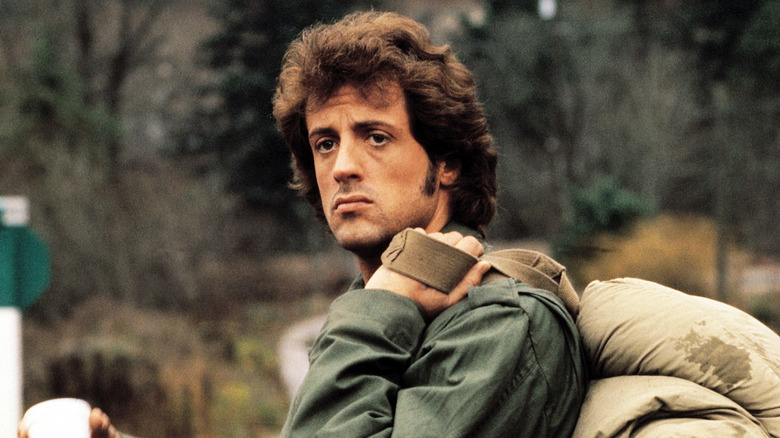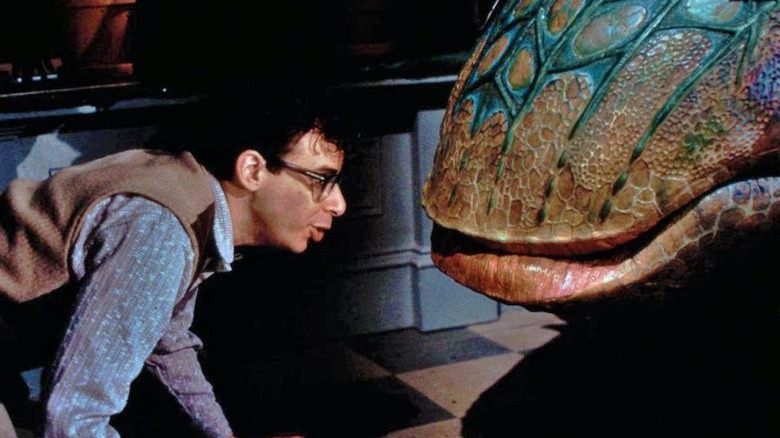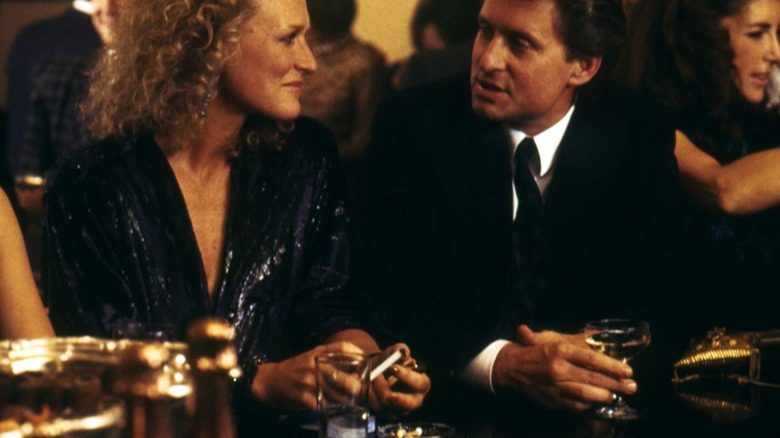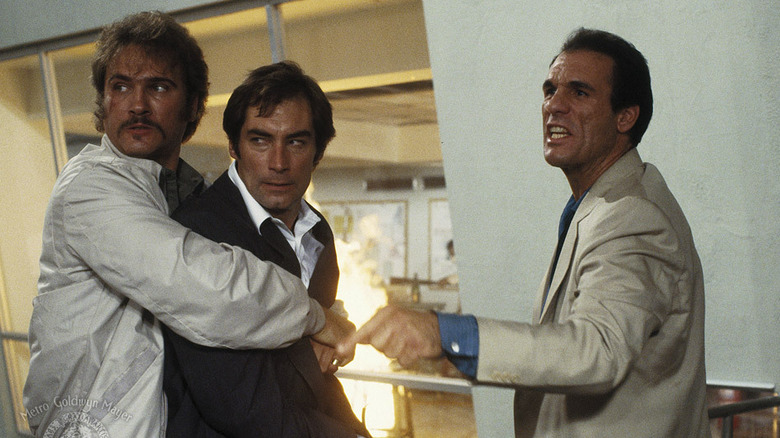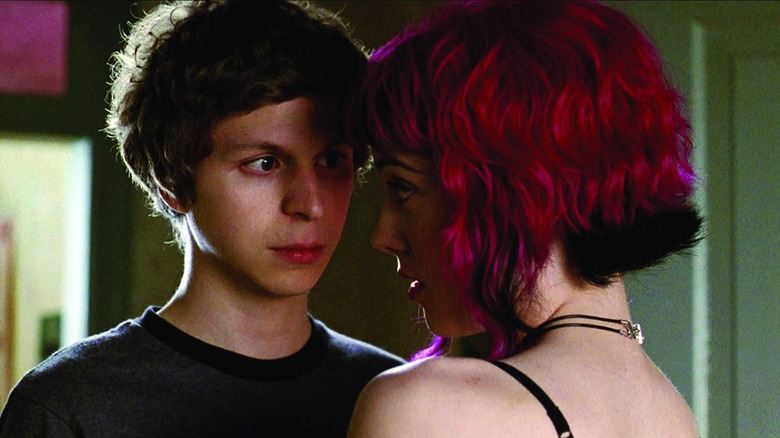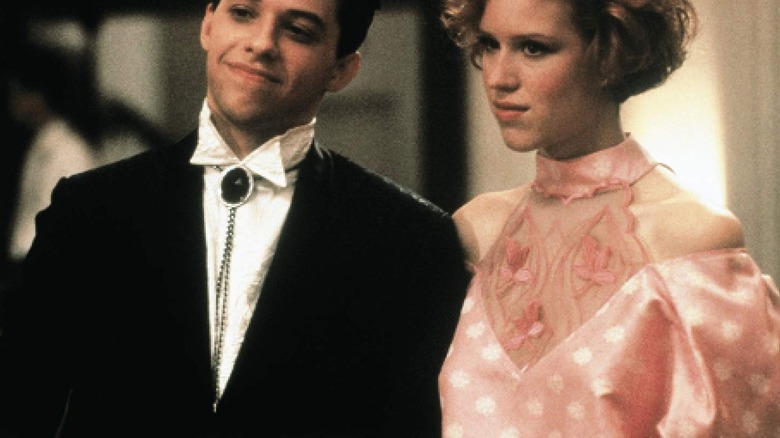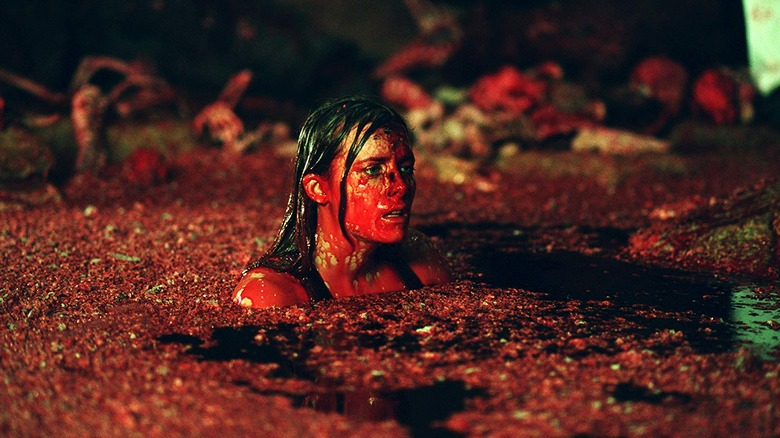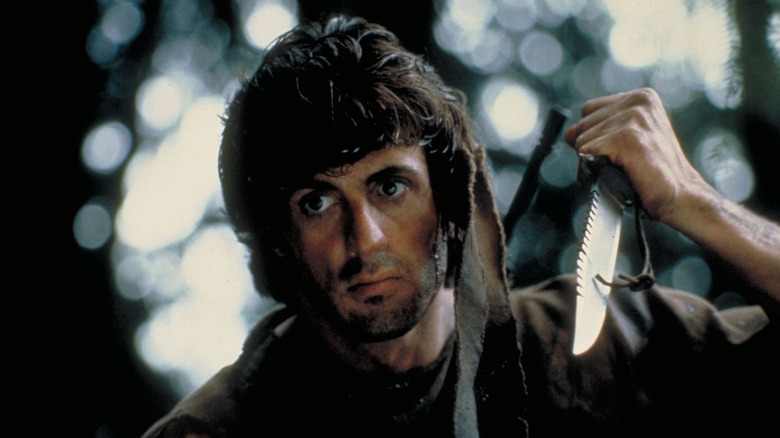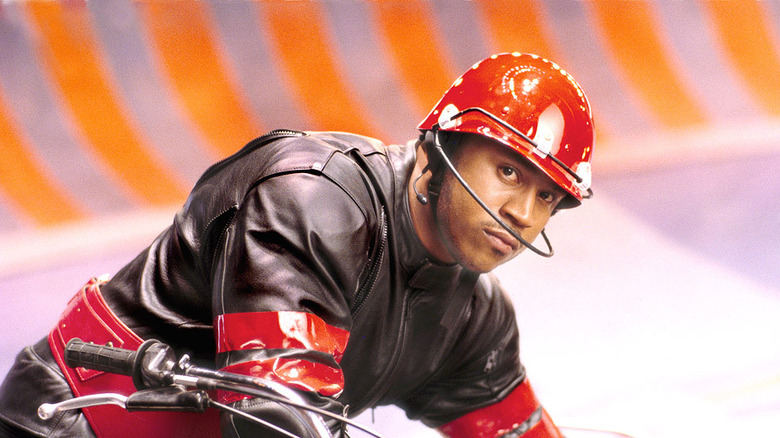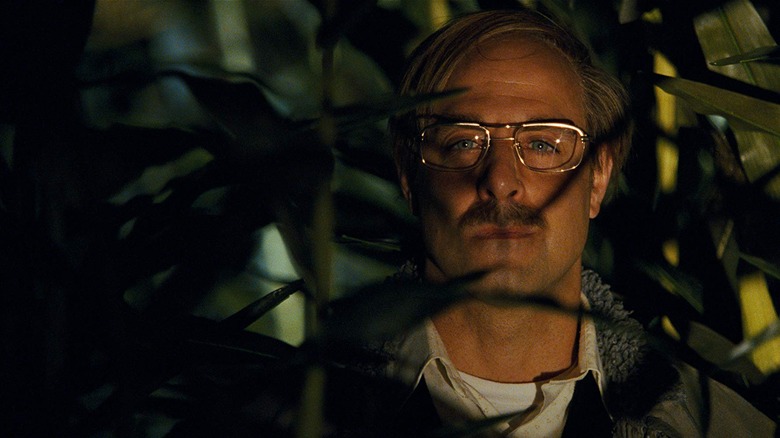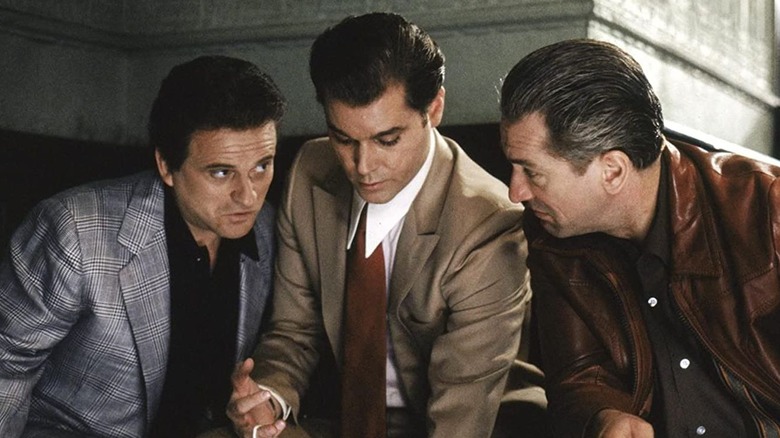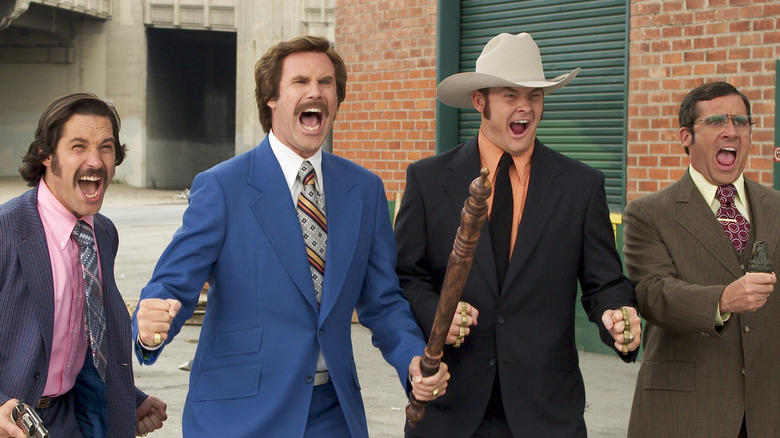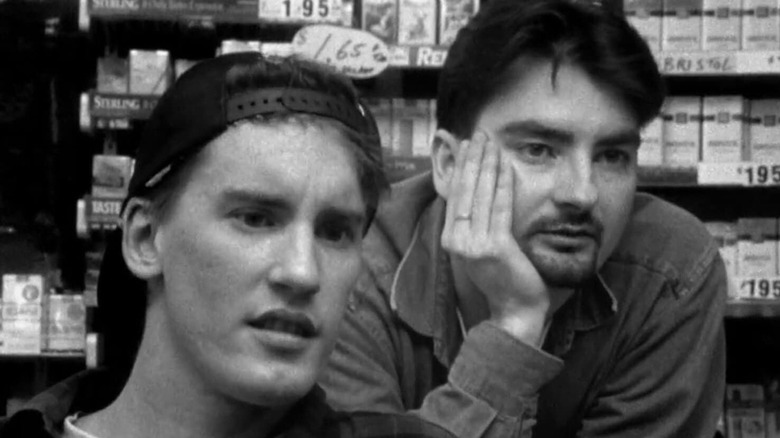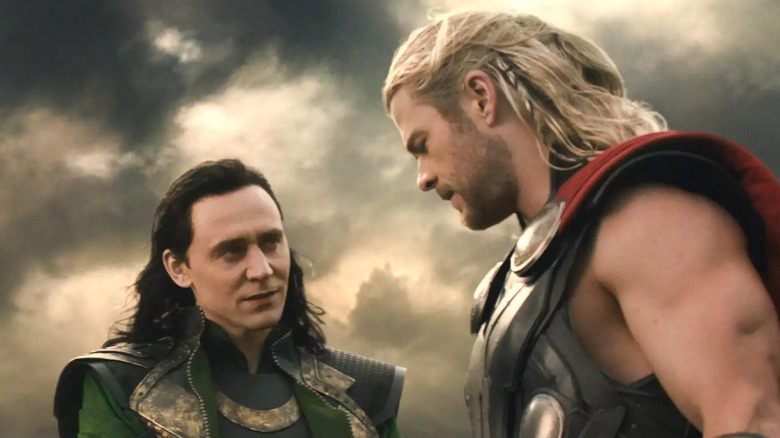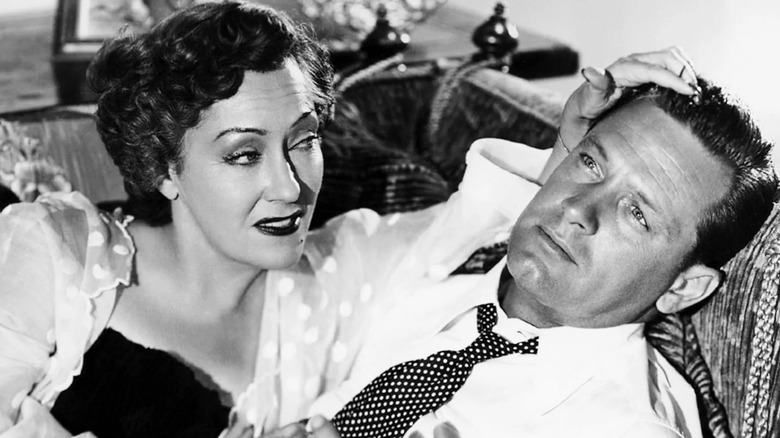Movies That Were Majorly Changed After Test Screenings
As moviegoers, we generally think of the films we see in the theater as complete products, whether they've arrived via the unimpeded vision of a filmmaking genius or the storytelling-by-committee approach of a group of studio executives. Most of the time, a movie is a movie, and we can't do anything about it. Unless, that is, we are invited to take part in the market research exercise known as the test screening.
For decades now, studios have trotted out nearly complete versions of upcoming films to a select few audience members, and asked them for feedback. Sometimes that feedback can lead to a tweak here or an edit there; other times, test audience feedback is so intense and unanimous that the film in question could be headed for a serious overhaul. Whether you know it or not, this was the case for some of the biggest films you've ever seen, from action blockbusters to major book adaptations. Let's take a look at some of the biggest changes ever made to movies based on the reactions of a test screening audience.
Little Shop of Horrors added a new ending after test screenings
Director Frank Oz originally wanted his 1986 adaptation of the off-Broadway musical "Little Shop of Horrors"(itself based on Roger Corman's 1960 film) to end the same way the stage version of the story does. In that version, the killer alien plant known as Audrey II prevails, eating both her owner, Seymour, and her owner's love interest, Audrey, before attempting what amounts to a world conquest. Though executives were against it, Oz was given permission to shoot his version of this ending, and it stayed in the movie ... until test audiences saw it.
"For every musical number there was applause, they loved it, it was just fantastic... until we killed our two leads," Oz recalled to EW. "And then the theater became a refrigerator, an ice box. It was awful and the cards were just awful. They were saying that they hated us killing them. You have to have a 55 percent 'recommend' to really be released and we got a 13."
Oz requested a second test screening just to make sure, and got the same response from a different audience. The verdict was in. Oz reshot a new ending in which Seymour electrocutes Audrey II and then lives happily ever after with Audrey, and that's the version that wound up in theaters.
Fatal Attraction's final act was changed
"Fatal Attraction" remains one of the most successful thrillers of the 1980s, a film that launched Glenn Close into stardom and earned six Academy Award nominations. The film is still a memorable, tense psychological thrill ride thanks to the incredible lead performances of Close and Michael Douglas, and to key moments like the infamous boiled rabbit, but according to Close it was actually originally going to end in an even darker way than it ultimately did. Remember the scene in which Dan goes to Alex's apartment and they fight over a kitchen knife? Well, Alex was supposed to use that moment to get Dan's prints on the knife — which she would then kill herself with and use to frame him for her murder. Test audiences had something else in mind.
"The original ending was a gorgeous piece of film noir. She kills herself, but makes sure that his prints are all over the knife, and he gets arrested," Close told Movieline. "He knows he didn't do it, but he's going to jail anyway. But audiences wanted some kind of cathartic ending, so we went back months later and shot the ending that's in the movie now." A different ending, in which Dan and his wife Beth fight Alex until Beth shoots her, was added.
Licence To Kill had its original title changed after test audiences were confused
Test screenings can sway many different aspects of a film's plot, from the attention given to various characters to the level of humor vs. drama to the way the ending plays out, but it's not often that you hear about a film that comes out of the test screening process with a different title.
That's exactly what happened to the last James Bond film of the 1980s and Timothy Dalton's second and final outing as Bond, "Licence To Kill."
The film was originally titled "Licence Revoked," because that's exactly what happens in the film. Bond becomes a rogue agent as he goes on a quest for vengeance against a drug kingpin who killed his friend's wife shortly after their wedding, and M suspends him and revokes his trademark license to kill. However, when the film was test-screened for American audiences, they were puzzled by the title, as they thought of "License Revoked" as something that happens to driver's licenses, not a cool secret agent's license to kill. So the title was altered to avoid any confusion.
Scott Pilgrim vs. The World changed its ending
"Scott Pilgrim vs. the World" and its source material, the "Scott Pilgrim" graphic novel series by Bryan Lee O'Malley, developed simultaneously, with O'Malley releasing the final volume of his story just weeks before Edgar Wright's film hit theaters. That meant Wright and company did not necessarily have a concrete ending from the source material to go by when they wrote the film, and that meant an ending that created some trouble at test screenings.
The original ending of the film featured Scott staying with Knives Chau, his girlfriend in the beginning of the film, rather than being with Ramona Flowers, but according to Wright, this created arguments during the testing process.
"The way that we'd originally written it, which wasn't quite right, is we were trying to do a 'Graduate' or 'Heartbreak Kid'-style ending," Wright told EW. "To tell the honest truth, Ellen Wong [who plays Knives] was so lovely and so charming that it just made me feel horrible even doing that ending. So the ending we did have was neither here nor there."
When the test screenings didn't go well, Wright, O'Malley, and co-writer Michael Bacall went back and wrote a new ending in which Knives encourages Scott to be with Ramona.
Pretty in Pink changed the resolution of its love story
A 1980s teen romcom classic written by John Hughes and directed by Howard Deutch, "Pretty in Pink" is an interesting case of test screening changes in part because you can still experience the original version of the story if you're willing to track down the novelization of the film. The book, you see, was already written by the time the studio requested a new ending from Hughes and Deutch following a test screening response in which audiences clearly picked a winner in the battle for Andie's (Molly Ringwald) heart.
In the film's original ending, Andie actually did come around to falling for her longtime best friend Duckie (Jon Cryer), who'd been in love with her the whole time, but test audiences wanted Andie to end up with Blaine (Andrew McCarthy), the upper class guy. Because the novelization is based on the original script, Duckie still gets the girl in the book, but Hughes and Deutch crafted a new ending in which Blaine apologizes to Andie and Duckie, feeling they should be together, and Duckie vouches for him. So, if you like that Andie ended up with Blaine, you have early test audiences to thank.
The Descent brightened its ending after U.K. audiences balked
Neil Marshall's brutal subterranean horror flick "The Descent" is a film that changed not so much because of traditional test audiences, but because of the test that was its release in the U.K., which happened more than a year before the film finally made its way to the States. "The Descent" is a relentless, grimy thrill ride full of gore and creature thrills, and its U.K. ending drove its sense of dread and darkness all the way through to the final moments, as the film ends with the reveal that Sarah (Shauna Macdonald), the last survivor of the cave, only dreamed that she'd escaped, and was in reality still sitting in the dark, imagining her dead daughter sitting across from her.
By the time the U.S. release was looming, audiences had given enough feedback saying they found the ending too bleak, and distributor Lionsgate asked for a change. So Marshall cut the final minute of the film, allowing Sarah to escape the cave for real, even if she did hallucinate one of her dead friends sitting next to her in the car to give the audience one last scare.
First Blood's test screenings proved the ending needed to change
It might be hard to believe now, but "First Blood" was originally supposed to be a one-and-done affair, because John Rambo was originally supposed to die. Yes, Sylvester Stallone's tortured Vietnam veteran who became synonymous with action movie juggernauts in the 1980s was originally going to get killed at the end of his first and only movie. That's what happens in David Morrell's novel on which the film is based, and it's what happened in the first version of Ted Kotcheff's film, which he saw as a suicide mission that would end with Rambo killing himself.
From the moment he joined the production, Stallone felt the suicide ending for Rambo was too excessive, and pitched an alternate ending that Kotcheff ultimately shot on the same day as his original ending. By the time the film ended up with Orion Pictures, the distributor had the idea to run a test screening with Kotcheff's original ending, just to see what would happen.
"[The test audience] were all unanimous," Kotcheff told EW. "They all said, in different words: "This is the best action film I've ever seen. But the ending is horrible!" In the face of this universal disapproval, they agreed to change the ending."
Rollerball's test screenings resulted in multiple changes
"Rollerball" sounds like the kind of film that might work well now. Director John McTiernan, who helped give birth to the action movie as we know it with classics like "Die Hard" and "Predator," set out to remake a cult classic from director Norman Jewison about an ultra-brutal futuristic sport. The film could have combined top-notch filmmaking and casting with sci-fi spectacle and enough violence and nudity to keep audiences who loved R-rated action coming back for more. That was the plan, anyway.
"Rollerball" seemed to be in trouble from the beginning, when McTiernan drew internet ire for opting to change the futuristic setting of the original film and ditching the first script. Then came test screenings in the spring of 2001. The response was terrible, thanks in no small part to an extremely negative review from Ain't It Cool News, and the studio went into damage control mode. The release date was pushed to 2002, McTiernan conducted two weeks of reshoots to refine certain scenes, and the studio mandated that the film be cut to make a PG-13 rating, hoping younger audiences would respond to it. This meant all of the nudity and a good deal of the violence were toned down. "Rollerball" was ultimately a critical and commercial failure.
Test screenings changed a pivotal death in The Lovely Bones
Sometimes test audiences are extremely specific with what they want, and while they don't necessarily want a filmmaker to change the plot of a film, they do want a change in how the film arrives at a certain plot point. This was the case with "The Lovely Bones," Peter Jackson's 2009 adaptation of Alice Sebold's bestselling novel.
Jackson told Reuters (via The Guardian) that test audiences had a lot to say about one of the film's key ending points, not because of what happened, but because of how it happened. The specific complaint was regarding the death of the child killer Mr. Harvey (Stanley Tucci), who is killed, as he is in Sebold's novel, when an icicle hits him on the shoulder and causes him to lose his balance and fall down into a ravine. Audiences were happy to see Harvey die, but they felt his death was too quick.
"We got a lot of people telling us that they were disappointed with this death scene, as they wanted to see [the character] in agony and suffer a lot more," Jackson said. "We had to create a whole suffering death scene just to give people the satisfaction they needed." So Jackson went back to the cutting room and added more "suffering." In the final film, we see Harvey's full fall to his death, complete with bone-crunching bounces and facial lacerations, and the camera lingers on his body after he lands just to make sure we caught the full force of it.
Goodfellas had to tone down the violence
It's now considered one of Martin Scorsese's best films, but members of the original test screening audience for "Goodfellas" walked out in disgust. The reactions were instant and visceral, with several people leaving in the opening moments of the film as Tommy DeVito (Joe Pesci) violently stabs Billy Batts (Frank Vincent) to death, and they rattled studio executives. Speaking with Entertainment Weekly in 2019, Scorsese reflected on the test screening process, saying, "I'm in the process of making the film. I screen it for some people, they go 'maybe you don't need that,' and maybe I do things, or maybe not."
Following the "Goodfellas" screening, Scorsese began tweaking the movie's edit. Working directly with editor Thelma Schoonmaker, the two determined precisely how many stab wounds the Batts character could sustain on film before it became gratuitous and relegated the rest to off-screen sound effects and reactions from Henry Hill (Ray Liotta).
Not all screening comment cards resulted in cuts to the film, however. Scorsese revealed that while the violence was too much for viewers, they loved Scorsese's real-life mother in the role of Mrs. DeVito, Tommy's mother. Their feedback saved the heartwarming sequence from the cutting room floor, and the final result is one of the greatest gangster movies of all time.
Anchorman had a total plot revision
"Anchorman: The Legend of Ron Burgundy" has become a modern comedy classic, but the original plot was received so poorly by test audiences that it had to be completely reshot. The retooling left several big name comic actors on the cutting room floor, like Maya Rudolph, Stephen Root, Amy Poehler and Justin Long. There was even a role for rap legend Chuck D that had to be abandoned.
Will Ferrell superfans need not fret, however, as all the unused footage from the feature film — mostly involving a terrorist group called The Alarm Clock — was repurposed into a so-called "lost film" called "Wake Up, Ron Burgundy." Initially released as its own direct-to-DVD feature, it's now included as an extra on the "Unrated Rich Mahogany Edition" Blu-ray.
The theatrical release, of course, became a huge hit. "Anchorman" earned over $90 million at the box office and has a rating of 86% with audiences on Rotten Tomatoes, but beyond the numbers it became what its titular character is known as: a legend.
Clerks had a down ending
As Dante (Brian O'Halloran) tells Randal (Jeff Anderson) in the 1994 cult classic "Clerks," "Life is a series of down endings." That was certainly true of "Clerks" itself, as originally imagined by writer-director Kevin Smith. When first screened at the International Feature Film Market, the film ended with convenience store clerk Dante being shot and killed by a robber. Based on advice garnered from that screening, however, Smith cut out that final scene to end the film when Randal leaves the store.
Kevin Smith admitted he hadn't really known how to end a movie at that point in his career, but he brought the idea back for a meta joke in "Clerks III." In this third installment of the franchise, based on Smith's own 2018 heart attack, Randal has an existential crisis when he survives a massive cardiac event but discovers he's never done anything substantial with his life.
The plot then follows an art-imitating-life narrative arc in which Randal attempts to make a movie about working at the Quick Stop, titled "Inconvenience." At one point Randal contemplates killing off Dante's character, to which Dante reacts with his signature incensed hilarity. It won't ever be considered mainstream popular, but members of Smith's slacker generation fan base are sure to get the joke.
Thor: The Dark World intended for Loki to stay dead
Thor (Chris Hemsworth) may be the star of his own series of movies in the MCU, but Loki (Tom Hiddleston) is just as beloved. In fact, Loki is easily the most popular villain-slash-antihero of the multiverse, with a redemption arc in "Thor: Ragnarok" and his own extremely popular series on Disney+. Imagine, then, if Loki had truly died at the end of "Thor: The Dark World" as originally intended.
Tom Hiddleston revealed on the Empire film podcast that Loki's death in "Thor: The Dark World" was meant to stick, but that test screening audiences rejected the idea. Naturally it makes sense that fans wouldn't trust any Loki death scene, as the notorious trickster character is known for his misleading illusions. Indeed, moments earlier in "Thor: The Dark World," the character makes it look like he cuts off his brother's hand in a moment of betrayal. Plus, Loki's no stranger to faking his death, as he does at the end of the first "Thor."
It's therefore fitting that the sly adopted Asgardian pulls another fast one. Loki's "The Dark World" death was meant to serve as a redemption arc for the mischievous villain. While it can be said that undermining that intention in "The Dark World" leaves the middle of the film with no real stakes, it ultimately allows Loki to serve a much greater purpose — and enjoy a much more satisfying redemption — in "Thor: Ragnarok" and beyond.
Sunset Boulevard struck the wrong tone
"Sunset Boulevard" was released in the golden age of cinema. Directed by the legendary Billy Wilder, it's considered one of the greatest films of all time, from the first frame to the last. At the initial test screening for the film, however, its iconic opening confused audiences. Originally, instead of the shot of Joe Gillis (William Holden) floating facedown in a pool, the movie opens to his corpse sitting up in the morgue and beginning the narration of his story. The first (and only) people to see this cut, however, found it comedic rather than dark.
Ironically, the film was initially conceived as a comedy, as Wilder told The Paris Review in 1996. "For a long time I wanted to do a comedy about Hollywood," he said. "Instead it became a tragedy of a silent-picture actress, still rich, but fallen down into the abyss after talkies," he continued.
With the film in its final form – sans morgue — it rattled the film industry. Barbara Stanwyck, Wilder said, bowed down to Gloria Swanson for her performance as Norma Desmond, while head of MGM Louis B. Mayer thought it would forever mar Hollywood's reputation. "I told him just what he could do," said Wilder.
Thankfully the film went on to be a big hit, earning Oscars for its screenplay, set decoration, and music. Over 70 years later, "Sunset Boulevard" is one picture that never got small.
